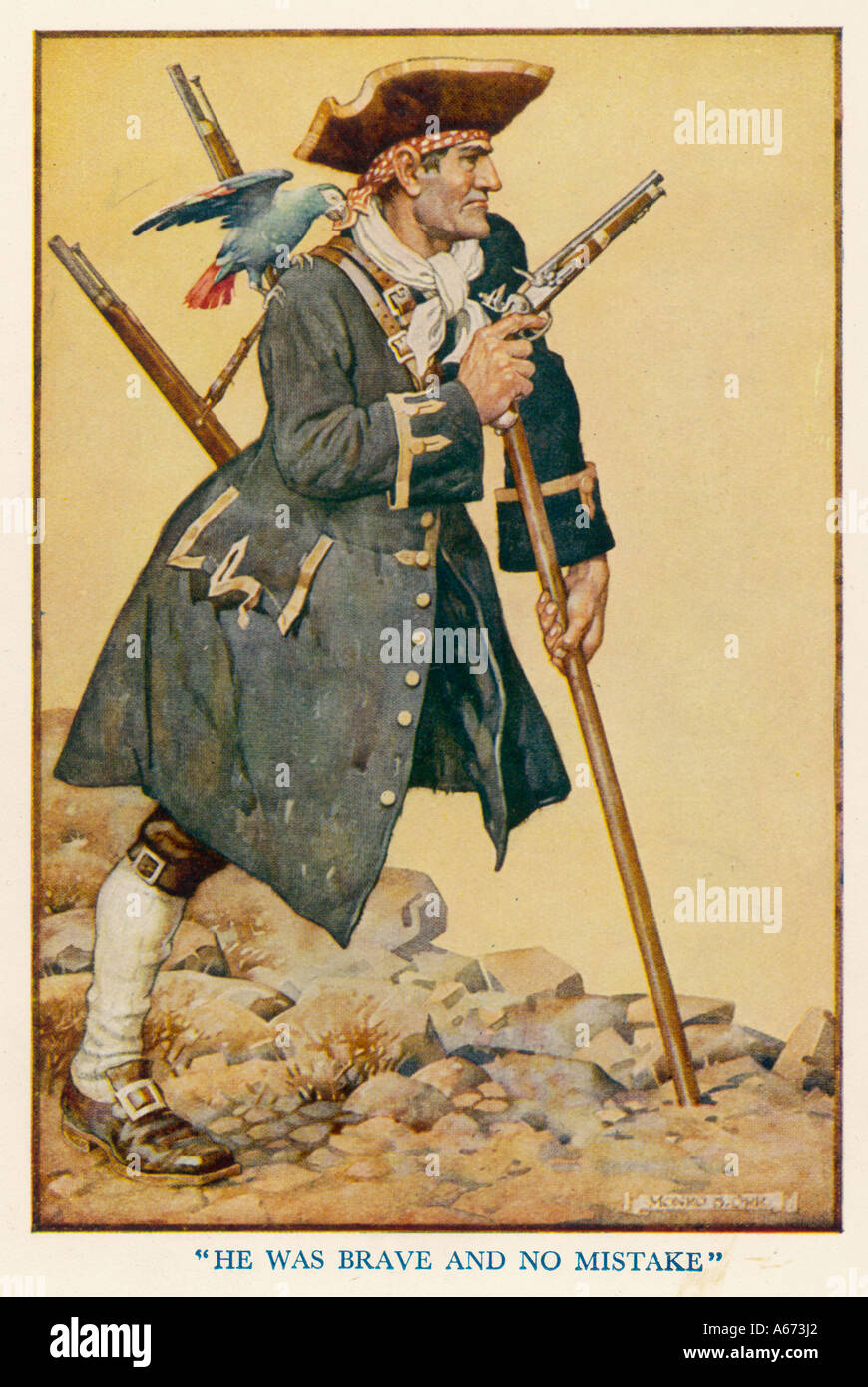Why does Long John Silver remain one of the most iconic pirates in literary history? The answer lies in his complex character, a cunning and resourceful figure whose charm often masks his ruthless nature. Robert Louis Stevenson crafted a character so vivid that he transcends the pages of Treasure Island to become a cultural phenomenon. As we delve deeper into the life and legacy of this fictional pirate, it becomes clear why he continues to captivate audiences worldwide.
Long John Silver first appeared in Robert Louis Stevenson's novel Treasure Island, published in 1883. The story centers around young Jim Hawkins, who stumbles upon a treasure map leading to Captain Flint's buried gold. However, the real allure of the tale lies not in the pursuit of wealth but in the interactions between characters, particularly those involving Silver. He serves as the main antagonist, yet his charisma makes him an unforgettable presence. Unlike stereotypical villains, Silver is portrayed with layers of complexity—he is both dangerous and charismatic, capable of inspiring loyalty while simultaneously plotting betrayal.
| Bio Data | Details |
|---|---|
| Name | Long John Silver |
| Occupation | Pirate, Quartermaster |
| Place of Origin | Unknown (possibly England) |
| Notable Ship | The Hispaniola |
| First Appearance | Treasure Island (1883) |
| Creator | Robert Louis Stevenson |
| Personal Traits | Cunning, persuasive, charming, manipulative |
| Professional Skills | Negotiation, leadership, survival tactics |
| Reference | Britannica Entry |
Silver's role extends beyond being merely a villain; he embodies the duality inherent in human nature. While he is willing to deceive and betray for personal gain, he also demonstrates moments of genuine care and concern. For instance, his treatment of young Jim Hawkins showcases a paternal side, blurring the lines between friend and foe. This ambiguity adds depth to his character, making him more relatable despite his morally questionable actions.
In the context of Treasure Island, Silver operates as a quintessential antihero. His ability to command respect from fellow pirates underscores his leadership qualities. Despite missing a leg—a physical limitation that might have diminished his authority—Silver compensates through sheer force of personality. Using crutches with remarkable agility, he navigates challenges both literal and metaphorical, proving himself adaptable and resilient. These traits contribute significantly to his enduring appeal.
Stevenson’s portrayal of Silver reflects broader themes prevalent during the era when Treasure Island was written. The late 19th century saw increased fascination with adventure stories set against exotic backdrops. Pirates, especially, became symbolic figures representing freedom and rebellion against societal norms. Silver epitomizes these ideals while simultaneously critiquing them. Through him, Stevenson explores the darker aspects of ambition and greed, cautioning readers about the consequences of unchecked desires.
Over time, Long John Silver has evolved into a cultural icon transcending literature alone. Adaptations across various media—from films to comic books—have kept his legend alive. One notable example includes Pipeline Comics' reinterpretation titled Lady Vivian Hastings, where Silver collaborates with a vengeful noblewoman seeking retribution against her husband. Such reinterpretations highlight the versatility of Silver's character, allowing modern audiences to engage with him in diverse contexts.
Furthermore, Silver remains relevant due to annual celebrations like Talk Like a Pirate Day. Observed on September 19th, this event encourages participants to embrace pirate parlance, often referencing Silver's distinctive speech patterns. Phrases such as shiver me timbers and yo ho ho are attributed to him, reinforcing his association with pirate lore. Restaurants like Long John Silver’s capitalize on this connection by hosting themed promotions, further embedding him within popular culture.
Despite his fictional status, Silver holds historical significance as well. Historians speculate whether he draws inspiration from real-life pirates such as Bartholomew Roberts or Edward Teach (Blackbeard). Regardless of direct correlations, Silver exemplifies certain traits common among seafaring outlaws: bravery, cunning, and an insatiable appetite for adventure. By fictionalizing these attributes, Stevenson created a archetype that resonates deeply with readers.
Interestingly, some interpretations challenge traditional perceptions of Silver's height. Contrary to expectations, he is depicted as shorter than average in certain adaptations. This discrepancy raises questions about how physical characteristics influence perceptions of power and authority. Regardless of stature, however, Silver maintains his status as a formidable opponent, proving that true strength resides in intellect rather than physique.
Ultimately, Long John Silver stands testament to the enduring allure of piracy in storytelling. His journey from quartermaster aboard Captain Flint's vessel to becoming one of literature's most memorable antagonists illustrates the transformative potential of creative imagination. Whether viewed through the lens of morality, psychology, or cultural studies, Silver continues to inspire discussions and debates long after his initial introduction.
As new generations discover Treasure Island, they too will encounter this enigmatic figure whose legacy endures thanks to Stevenson's masterful craftsmanship. In doing so, they may find themselves reflecting upon timeless questions regarding identity, morality, and the human condition—all encapsulated within the persona of Long John Silver.



